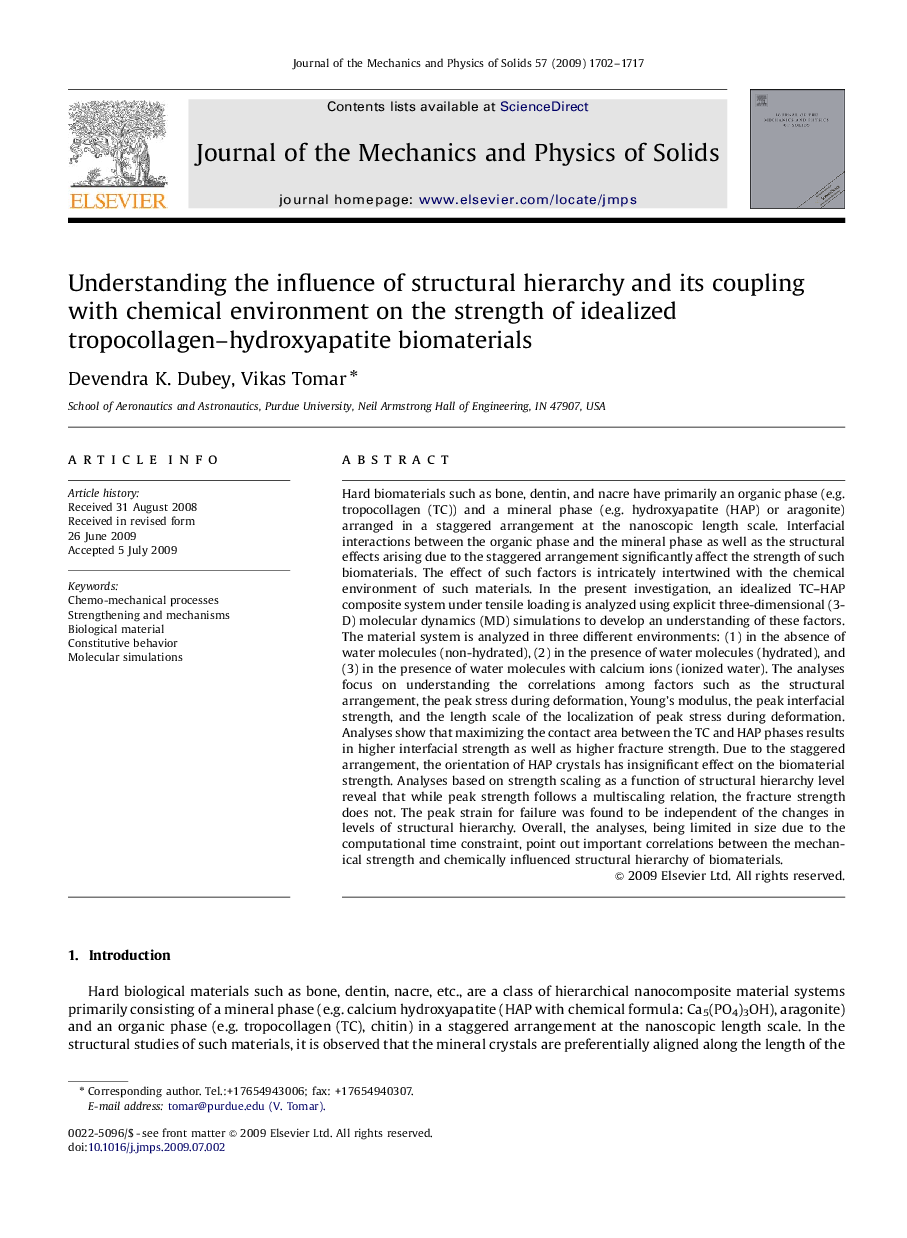| Article ID | Journal | Published Year | Pages | File Type |
|---|---|---|---|---|
| 799806 | Journal of the Mechanics and Physics of Solids | 2009 | 16 Pages |
Hard biomaterials such as bone, dentin, and nacre have primarily an organic phase (e.g. tropocollagen (TC)) and a mineral phase (e.g. hydroxyapatite (HAP) or aragonite) arranged in a staggered arrangement at the nanoscopic length scale. Interfacial interactions between the organic phase and the mineral phase as well as the structural effects arising due to the staggered arrangement significantly affect the strength of such biomaterials. The effect of such factors is intricately intertwined with the chemical environment of such materials. In the present investigation, an idealized TC–HAP composite system under tensile loading is analyzed using explicit three-dimensional (3-D) molecular dynamics (MD) simulations to develop an understanding of these factors. The material system is analyzed in three different environments: (1) in the absence of water molecules (non-hydrated), (2) in the presence of water molecules (hydrated), and (3) in the presence of water molecules with calcium ions (ionized water). The analyses focus on understanding the correlations among factors such as the structural arrangement, the peak stress during deformation, Young's modulus, the peak interfacial strength, and the length scale of the localization of peak stress during deformation. Analyses show that maximizing the contact area between the TC and HAP phases results in higher interfacial strength as well as higher fracture strength. Due to the staggered arrangement, the orientation of HAP crystals has insignificant effect on the biomaterial strength. Analyses based on strength scaling as a function of structural hierarchy level reveal that while peak strength follows a multiscaling relation, the fracture strength does not. The peak strain for failure was found to be independent of the changes in levels of structural hierarchy. Overall, the analyses, being limited in size due to the computational time constraint, point out important correlations between the mechanical strength and chemically influenced structural hierarchy of biomaterials.
